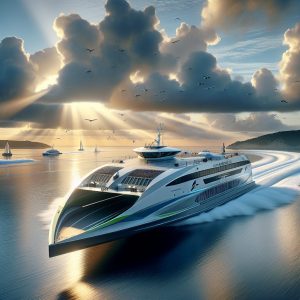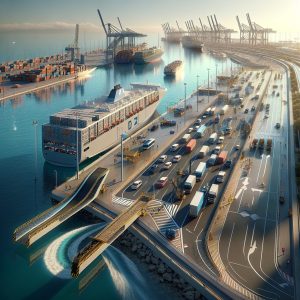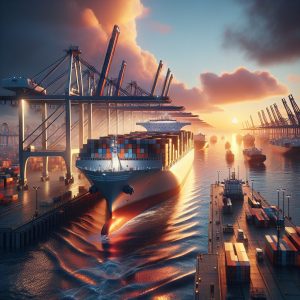Autonomous Systems in the Maritime Sector: Innovations Revolutionizing the Naval Industry
In a world where technology is advancing rapidly, automation has become a fundamental pillar for the development of various sectors. The maritime industry is no exception, and recent innovations are beginning to change the way we navigate and operate at sea. A clear example of these innovations is the recent contract of Allen Control Systems (ACS), a leading company in autonomous precision robotics, in collaboration with defense contractor ManTech. This agreement aims to integrate the autonomous weapons system Bullfrog™ into the maritime platforms of the United States Special Operations Forces. This advancement represents a significant evolution in maritime defense strategy and opens up a series of opportunities for both industry professionals and investors interested in naval technology.
Autonomy in the maritime sector not only aims to facilitate military operations but also promises interesting applications in commercial and recreational navigation. With the implementation of these autonomous systems, operations could become more efficient, reducing costs and minimizing human risks.
Technological Innovation: The Bullfrog™ System
- Bullfrog™ is more than just a weapons system. It is an advanced technological platform that incorporates artificial intelligence to operate with maximum precision.
- This system has been designed to meet the demands of modern conflicts, where speed and accuracy are crucial.
- The ability to operate autonomously allows Bullfrog™ to perform specific tasks with minimal human intervention, which is a significant advantage in high-risk scenarios.
The integrated artificial intelligence not only improves efficiency but also offers the ability to learn and adapt to different situations, increasing its operational effectiveness. The possibilities offered by a system like Bullfrog™ are vast. In the civilian sector, similar principles could be applied to develop automation in logistical operations, maritime traffic management, and route optimization. For investors, this represents a potential revolution in the maritime industry, which could translate into significant economic opportunities.
Impact and Job Opportunities in the Maritime Sector
The integration of autonomous technology in the maritime sector not only affects operations at sea but also has a direct impact on the job market. New employment opportunities related to the development, maintenance, and operation of these advanced systems would be created. Professionals with experience in autonomous technology, artificial intelligence, and robotics will find a fertile field in the naval industry.
Maritime companies are starting to look for technical profiles that can help implement and manage these new technologies. Therefore, it is the ideal time for those interested in these areas to submit their resumes to companies like ACS and ManTech, which are leading this innovation.
Relevance for Nautical Enthusiasts
The implementation of autonomous technology in navigation also opens up possibilities for nautical enthusiasts. Advances in autonomous systems could be applied in the development of safer and more efficient recreational boats.
The ability to integrate artificial intelligence into personal watercraft can simplify maneuvers, optimize fuel consumption, and increase overall safety. These developments could encourage more people to explore the world of navigation by making boat control more accessible. This could increase interest and investment in this field, creating a virtuous cycle of innovation and growth in the sector.
Conclusion: The Horizon of Autonomous Navigation
The integration of autonomous systems like Bullfrog™ in the maritime sector marks a turning point in the history of navigation. These innovations are not only redefining operational capabilities in defense scenarios but also transforming expectations and opportunities in the civilian sector.
For merchant navy professionals, experienced sailors, investors, and nautical enthusiasts, these developments represent a new frontier of possibilities. The key is to stay informed and prepared to take advantage of the opportunities that this technological revolution will bring.
In summary, the deployment and use of autonomous systems on maritime platforms are undoubtedly significant news for the entire maritime community. Not only does it offer improvements in efficiency and safety, but it also opens new doors for professional development and economic growth in the sector. It is an exciting time for those who wish to be part of this unprecedented transformation in naval history.






